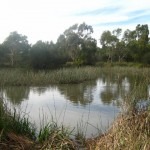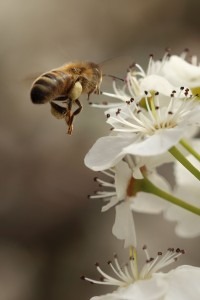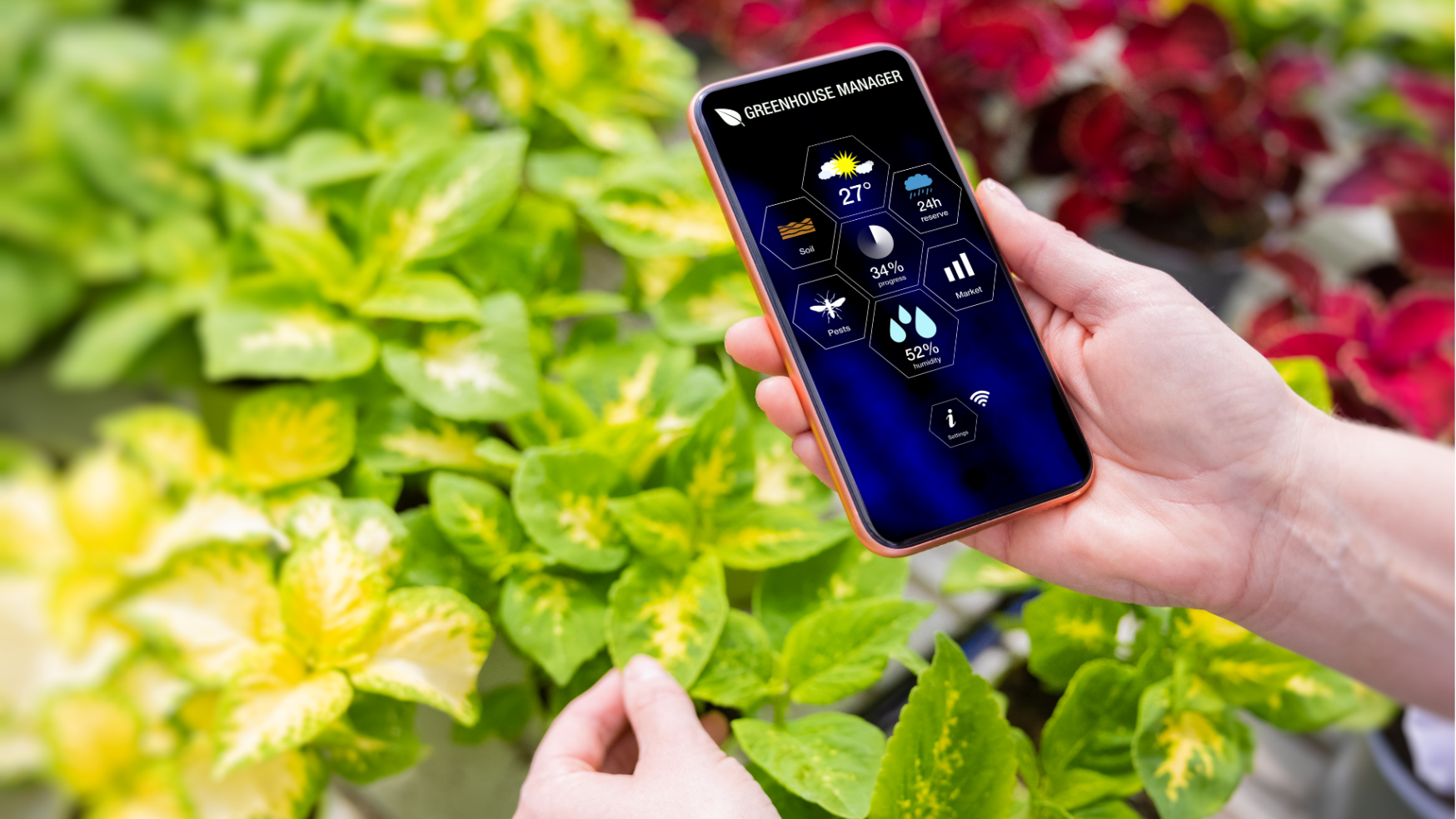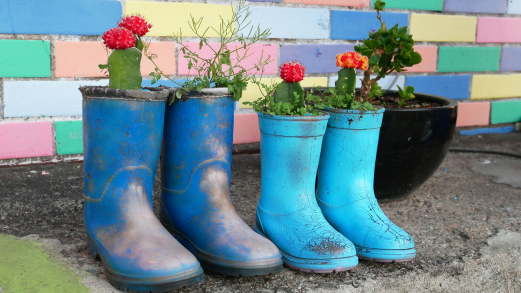Some people might ask why SGA talks about sustainable gardening rather than just gardening.
The fact is that horticulture in the hands of home gardeners, gardening professionals, nurseries and garden retail centres can have wide reaching deleterious impacts on the natural environment far from urban gardens. SGA’s goal is to help you prevent these impacts and, at the same time, make your gardens joyous, healthy and productive places.
Here are some things sustainable gardening can do.
Reduce weed spread into natural areas
Invasion of natural areas by weeds is a major problem occupying managers of National Parks and other reserves. A review of the academic literature and a survey of seed experts in Australia has revealed that the ornamental plant trade and vehicle movement are the major pathways for weed spread1. Thus the garden and nursery industry, as well as home gardeners, must take the blame for much of a problem which results in choking out or even elimination of native plants and habitat in natural areas.
So we recommend that gardeners use local indigenous plants where possible and dispose of invasive species appropriately so that they don’t spread further through Council green waste collections.
Lock up carbon from the atmosphere
Traditional horticultural and agricultural practice has impoverished soil of carbon by depleting it of organic material. Producing compost from plant and food waste and adding it to soil increases soil carbon directly2, increases bacterial and fungal life which lock up further carbon3,4. No-dig methods, cover crops/green manures and use of animal manures are also important contributors to addressing carbon levels and climate change4,5 All these practices lock up carbon in the form of stable humus which is longer lasting than surface vegetation and also increases fertility. According to some studies sequestration of carbon in soil could contribute more to addressing climate change than planting more trees2.
SGA recommends these approaches to soil fertility rather than chemical fertilizers which do not have the capacity to sequester carbon. It also promotes avoidance of digging and other methods of increasing soil microbial life to lock up carbon.
Reduce energy consumption and greenhouse gas emissions
Power tools are obvious consumers of electricity, but less obvious is that artificial chemicals and fertilisers used in the garden require energy-intensive industrial processes. These consume more energy in their production than natural products such as compost, manures (both animal and from leguminous plant growth) and home production of worm castings. In these days when we need to reduce greenhouse gas emissions, SGA advocates use of natural products obtained either from the home garden or other local sources and recommends avoiding power tools. We also suggest using the garden to protect the house from heat, cold and wind.
Local production of food in home and community gardens also contributes to reducing “food miles” – greenhouse gas generated by transportation of fruit and vegetables over large distances.
Reduce fertiliser pollution of waterways
 When water-soluble fertilisers, rich in nitrogen and phosphorus are applied to garden beds and lawns, a significant percentage of their content reaches waterways. This adds to levels of these chemicals entering waterways through agricultural use and are well-recognised to cause eutrophication and subsequent algal blooms6. A study in Perth, WA, shows that nitrogen and phosphorus from fertilization of urban lawns leach into ground water, posing a threat to waterways and wetlands7. The authors conclude “Alternate home garden styles or modified management practices for lawns may need to be developed in order to minimise nutrient enrichment of groundwater and waterbodies.” Reduced fertilization and better management of clipping practice of lawns reduce phosphorus runoff8.
When water-soluble fertilisers, rich in nitrogen and phosphorus are applied to garden beds and lawns, a significant percentage of their content reaches waterways. This adds to levels of these chemicals entering waterways through agricultural use and are well-recognised to cause eutrophication and subsequent algal blooms6. A study in Perth, WA, shows that nitrogen and phosphorus from fertilization of urban lawns leach into ground water, posing a threat to waterways and wetlands7. The authors conclude “Alternate home garden styles or modified management practices for lawns may need to be developed in order to minimise nutrient enrichment of groundwater and waterbodies.” Reduced fertilization and better management of clipping practice of lawns reduce phosphorus runoff8.
In all its activities, SGA advises against using artificial fertilisers, and instead recommends better garden management, soil improvement through using compost and manures, or if commercial products are used, those which are in solid form so that they release nutrients slowly, facilitating take up by plants rather than being washed away during watering or rainfall. In our Garden Product Guide – Safe for You ‘n’ Nature, we have evaluated commercial fertilisers for their environmental impacts and, if there seems to be no other option, only suggest using those with a low impact i.e. are slow release and made from natural or recycled materials.
Reduce pesticide and herbicide contamination of waterways
 To deal with pests, many gardeners and horticulturalists use chemical pesticides and herbicides. Pyrethroid pesticides have been shown to pollute urban creeks9. In a study of 8 urban streams in the USA, the herbicides prometon, simazine, atrazine, tebuthiuron and metolachlor and insecticides diazinon, carbaryl, chlorpyrifos, and malathion were detected most frequently10. Another study found diuron and simazine in runoff in proportion to their application in residential areas11.
To deal with pests, many gardeners and horticulturalists use chemical pesticides and herbicides. Pyrethroid pesticides have been shown to pollute urban creeks9. In a study of 8 urban streams in the USA, the herbicides prometon, simazine, atrazine, tebuthiuron and metolachlor and insecticides diazinon, carbaryl, chlorpyrifos, and malathion were detected most frequently10. Another study found diuron and simazine in runoff in proportion to their application in residential areas11.
SGA recommends that integrated pest management, companion planting and only low impact chemicals, such as those in the Garden Product Guide – Safe for You ‘n’ Nature, be used.
Reduce harm to wildlife from horticultural chemicals
 A recent review of 150 studies of neonicotinoids, which are widely used horticultural insecticides, focussed on imidacloprid and clothianidin and another, fipronil, which has a similar mode of action12. Examining their effects on vertebrates (mammals, birds, fish, amphibians and reptiles) the researchers found that imidacloprid and fipronil were toxic to many birds and most fish. Sub-lethal effects were found for all three insecticides, including reduced growth and reproduction capacity, impaired immune function and genotoxic and cytotoxic effects. Some effects were direct e.g. imidacloprid and clothianidin on birds. Other effects are exerted indirectly via the food chain, for example, on fish and lizards.
A recent review of 150 studies of neonicotinoids, which are widely used horticultural insecticides, focussed on imidacloprid and clothianidin and another, fipronil, which has a similar mode of action12. Examining their effects on vertebrates (mammals, birds, fish, amphibians and reptiles) the researchers found that imidacloprid and fipronil were toxic to many birds and most fish. Sub-lethal effects were found for all three insecticides, including reduced growth and reproduction capacity, impaired immune function and genotoxic and cytotoxic effects. Some effects were direct e.g. imidacloprid and clothianidin on birds. Other effects are exerted indirectly via the food chain, for example, on fish and lizards.
This gives even more reason to avoid artificial chemical use and achieve pest and disease control by more natural methods. Not to mention that growing edibles without toxic chemicals is much healthier for us!
Promote biodiversity by extending habitat for endangered species
As urbanization increases, gardens are increasingly being regarded as providing biodiversity benefits13. They can act as wildlife havens, particularly if they are adjacent or close to natural areas so that interconnected networks can be formed. A study of the endangered Gouldian finch showed that appropriate nest box provision could enhance production of offspring14. In 2014, the well-known naturalist, David Attenborough15, has drawn attention to the fact that reserves and National Parks are not enough to preserve biodiversity and that urban gardens, parkland and roadside verges must now be regarded as places where conservation should be practiced. That’s why SGA recommends growing native plants instead of exotics to offer food and habitat for native indigenous fauna.
So there are plenty of reasons for sustainable gardening!
Unlock the secrets of sustainable gardening in this masterclass, “Sustainable Bounty – Growing Enough” where we explore ‘what is enough’ and help you plan your crops. HERE
Photos: Sharron Pfueller and Phillip Eliades (Bee)
References
1. Coleman, M J, Sindel, B M. van der Meulen, A W, Reeve, I J. (2011) The Risks Associated with Weed Spread in Australia and Implications for Natural Areas. Natural Areas Journal, 31 (4), 368-376.
2. Batjes N H. (1998) Mitigation of atmospheric CO2 concentrations by increased carbon sequestration in the soil. Biology and Fertility of Soils 27 (3). 230-235.
3. Jastrow J D, Amonette J E, Bailey V L. (2007) Mechanisms controlling soil carbon turnover and their potential application for enhancing carbon sequestration. Climatic Change 80 (1 – 2), 5-23.
4. State of Victoria (2014) http://vro.depi.vic.gov.au/dpi/vro/vrosite.nsf/pages/soilhealth_biology_important. Last updated 01-09-2014.
5. Lai R. (2004) Soil Carbon Sequestration Impacts on Global Climate Change and Food Security. Science 11: 304 (5677) 1623-1627.
6. Mallin, M A, Johnson, V L, Ensign S H. (2009) Comparative impacts of stormwater runoff on water quality of an urban, a suburban, and a rural stream. Environmental Monitoring and Assessment 159 (1-4), 475-491.
7. Sharma, M L, D.E. Herne, D E, Byrne, J D, Kin, P G. (1996) Nutrient Discharge Beneath Urban Lawns To A Sandy Coastal Aquifer, Perth, Western Australia. Hydrogeology Journal 4 (1), 103-117.
8. Bierman, P M, Horgan, B P, Rosen, C J, Pagliari, P H (2010) Phosphorus Runoff from Turfgrass as Affected by Phosphorus Fertilization and Clipping Management. Journal of Environmental Quality, 39 (1), 282-292.
9. Weston, D P, Holme, R W, Lydy, M J. 2009. Residential runoff as a source of pyrethroid pesticides to urban creeks. Environmental Pollution 157 (1), 287–294.
10. Hoffman, R S, Capel, P D, Larson, S J. (2000) Comparison of pesticides in eight U.S. urban streams. Environmental Toxicology and Chemistry 19 (9), 2249–2258.
11. Revitt, D M, Ellis, B, Llewellyn, (2002) N R. Seasonal removal of herbicides in urban runoff. Urban Water 4 (1), 13–19.
12. Gibbons, D, Morrissey, C, Mineau, P. (2014) A review of the direct and indirect effects of neonicotinoids and fipronil on vertebrate wildlife. Environmental Science and Pollution Research, http://link.springer.com/article/10.1007/s11356-014-3180-5, June.
13. Goddard, M A, Dougill, A J, Benton, T.J. (2010) Scaling up from gardens: biodiversity conservation in urban environments. Trends in Ecology & Evolution 25 (2), 90–98.
14. Brazill-Boast, J, Pryke, S R, Griffith, S C. (2013) Provisioning habitat with custom-designed nest-boxes increases reproductive success in an endangered finch. Austral Ecology 38 (4), 405–412
15. Attenborough, D. Reserves and Parks not enough to protect nature. The Guardian. http://www.theguardian.com/environment/2014/sep/03/david-attenborough-nature-conservation-wildlife/
Related Articles:
Citizen Science: A Pathway to Gardening Success and Biodiversity Conservation
In recent years, the realm of science has experienced a remarkable transformation, one that invites people from all walks of life to participate…
A Sustainable Gardener’s Guide to Thrifty Gardening
Creating an eco-friendly and cost-effective garden involves more than just nurturing plants; it's about adopting a sustainable approach that…




